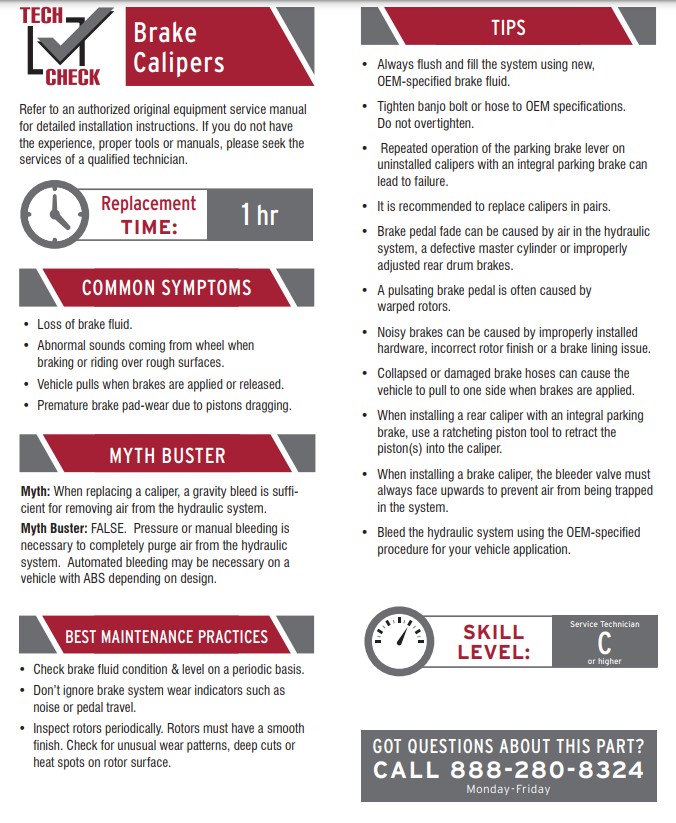Brake Caliper Function, Installation Tips & Symptoms of Common Failures
Let us guide you through the essentials of properly servicing a Disc Brake Caliper
What are Brake Calipers?
Disc brake calipers provide the clamping force that can bring a vehicle to stop in a matter of seconds. Brake calipers are an extremely powerful component that can produce up to 1500 PSI of clamping force on each wheel in 4-wheel disc brake systems.
How Brake Calipers Work
- Brake calipers receive hydraulic brake fluid from the power brake master cylinder through a series of high-pressure lines.
- As the hydraulic brake fluid fills the caliper bore, the caliper piston extends outward and clamps the brake pad against the rotor. This friction results in the reduction of speed or stopping.
- When the brake pedal is released, the master cylinder allows the brake fluid to exit the caliper bore and return to the master cylinder for the next braking application. This release of pressure causes the caliper piston to retract, and the clamping force is removed.
Diagnostics, Maintenance & Installation
To make sure this critical vehicle safety process is executed perfectly every time, it is important to inspect your brake system periodically and follow OE guidelines when servicing or replacing calipers.
In this CARDONE Tech Check, we provide common symptoms of a faulty brake caliper, maintenance best practices, and helpful installation tips to help you stop on a dime every time.

